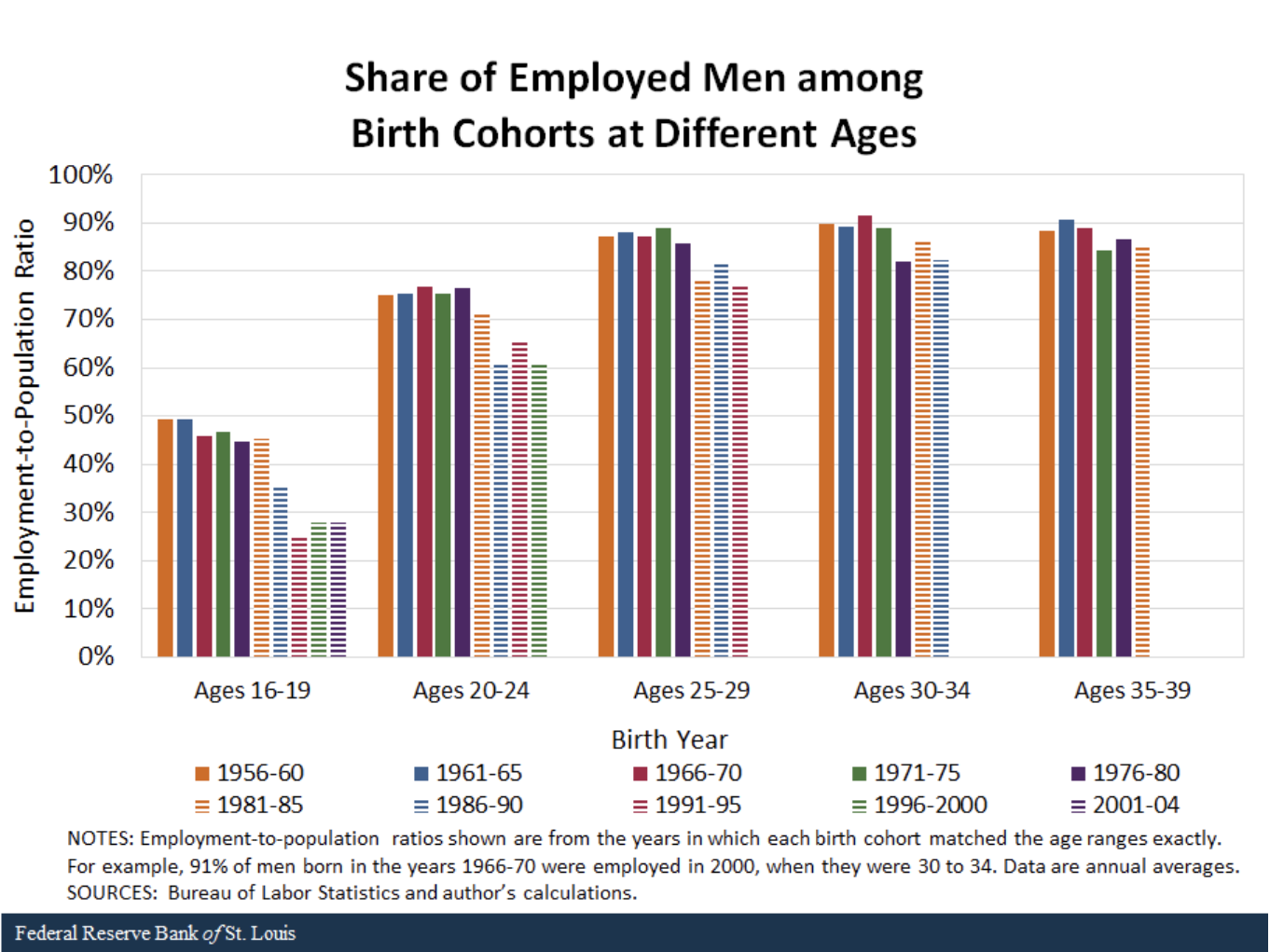
Alexi Rosenfeld/Getty Images
- Millennials' employment-to-population ratios have fallen the most of any age group since 2000.
- 12 million more Americans under age 60 would be employed today if E-P ratios held their 2000 highs.
- Low employment for young Americans risks long-term scarring and weak economic growth, the Fed said.
- See more stories on Insider's business page.
The Americans who endured the toughest employment hits of the past two decades are also the ones most prone to long-term scarring, according to a study from the Federal Reserve Bank of St. Louis. It's the youth.
The coronavirus pandemic fueled labor-market turmoil across nearly all groups. The headline unemployment peaked at 14.7% in April 2020 and has since fallen to 6.2% as the economy recovers. Yet new research from the regional Fed suggests most Americans – particularly millennials – faced lower overall employment before the pandemic even began. And when comparing generations' employment levels at different ages, younger Americans are handily underperforming their older counterparts.
The employment-to-population ratio for Americans under 60 years old was largely unchanged from 2000 to 2020 despite periods of strong economic growth and a falling unemployment rate. Had the ratio stayed the same over the past two decades, roughly 12 million more Americans under 60 would be employed, according to the study.
Put simply, population growth didn't drive an increase in employment because the share of those employed within that age group declined, William Emmons, lead economist in supervision at the St. Louis Fed, said.
Millennials bore the brunt of the decline, with the employment-to-population ratio for those aged 16 to 24 falling 15.5 percentage points for men and 12.1 points for women since 2000. The ratio fell 10.5 points for men and 3.6 points for women in the 25 to 34 age range.
Oddly, the largest increases in employment-to-population were experienced by Americans aged 65 and older. The ratio rose 5.2 points for men and 5.3 points for women over the past 20 years, according to the study. The data signals that, at least for the last 20 years, Americans at or beyond the typical retirement age have seen some of the greatest labor-market gains. While the reasons for this are unclear, Insider's Hillary Hoffower has previously reported on the generational wealth gap, which equates to millennials holding four times less wealth than boomers did at the same age.
The stagnant employment-to-population ratios for younger Americans are particularly concerning, Emmons said. Time spent outside of the labor force can increase risks of future unemployment and even weaken Americans' earnings potential when looking for work. This scarring effect is more consequential for younger people since they have less work experience to point to when searching for employment.
Millennials weathered tougher conditions well before COVID-19
It's not just lower employment that's holding millennials back. The cohort risks accumulating less wealth than past generations, with rising home costs, higher debts, and harsh recessions all cutting into the group's economic prospects.
Millennials born in the 1980s are at a greater risk than other age groups of becoming a "lost generation" for wealth accumulation, the St. Louis Fed said in a 2018 report. The financial crisis larger drops in overall wealth than older generations. And as markets rebounded from 2010 to 2016, older millennials still lost ground where other generations saw their wealth bounce back.
"The fact that many families suffered large wealth setbacks during their prime earning and wealth-accumulation years raises the question of whether they will be able to rebuild their wealth to meet major saving goals, including for a home purchase, college tuition for their children and retirement," Fed researchers said in the 2018 study.
The central bank highlighted similar concerns in its March study of generational employment. Weak employment earlier in life can affect future labor-force prospects and even hinder economic growth, Emmons said.

Federal Reserve Bank of St. Louis
Looking to older generations' employment ratios over time shows younger Americans struggling to keep up in job attainment. Americans born after 1981 have consistently achieved ratios well below those older cohorts boasted at the same age.
Young men faced larger shortfalls when compared to older counterparts, according to the Fed. Women saw smaller disparities across age groups, though their employment-to-population ratios typically landed below those achieved by men.
The 12 million "missing" workers under 60 were also disproportionately young adults. Americans born after 1985 counted for roughly two-thirds of missing employment over the past two decades, Emmons said. Men born after 1985 saw the most uneven effects. While the cohort counted for 22% of the population aged 16 to 59 in 2020, it counted for roughly 43% of missing workers.
